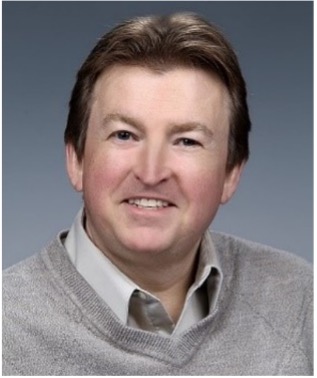Transformative innovations in the science and technology of personalized medicine, energy storage, and clean growth start from achieving atomic and molecular understanding, and then control, of the fundamental (bio)-chemical interactions that determine each process. To generate the required level of understanding and control, the UK is currently investing in the design of a new national facility centered on the unique measurement capabilities offered by relativistic ultrafast electron diffraction and imaging (RUEDI). Should RUEDI be successful in its goals, it will permit the direct observation of atomic/electronic motions directing the very chemistry we must control for the advances listed above. The working design of RUEDI is based around a 4MeV RF source with a pulse duration of 10fs, coupled to both a diffraction and an imaging beam line. Multiple ultrabright electron sources will be developed/evaluated in concert to achieve ~femtosecond time resolution out to long time scales to fully capture all the atomic details related to form and function from surface chemistry, structure-function relationships in biology, to exotic forms of matter. The expectation is that the system will have a large enough number of electrons/pulse for single-shot imaging in addition to stroboscopic pump-probe methods. The diffraction capability will be similar to MeV systems used extensively around the world, but in RUEDI we will focus on fast precision rotation/translation ambient/cryo-stages in a UHV chamber. The imaging capability will be unique and involve the design and implementation of what will essentially be a 2MeV TEM. The imaging capabilities should permit sub-nm spatial resolution to be coupled with sub-ps temporal resolution for samples that can be up to ~1cm thick. Using in-situ stage designs for gases/liquids/heating/cryo, high temperature/pressure can be coupled with a wide range of optical excitations to probe many transient and non-equilibrium dynamic states in materials. The methods and processes that are developed from the five novel RUEDI research themes – materials in extremes, the chemistry of change, internal/external fields, advanced energy technologies, and in-vivo biosciences will contribute to both local and national government policy/strategy for transportation, energy self-sufficiency and patient care. The facility will also help train scientists who can utilize the knowledge and methods to support existing businesses and form new start-ups that will lead to an overall expansion of the UK economy. As part of the development of the facility, RUEDI will involve artificial intelligence to help develop a digital twin for the instrument and to locate, assign and support users for the facility. In this presentation, we will discuss the current state-of-the-art in dynamic in-situ TEM/STEM and describe the advances anticipated with the RUEDI instrument.
Nigel D. Browning1, William Bryan2, James Clarke3,4, Michael Ellis3,4, Angus I. Kirkland5, Simon Maskell1, Julian McKenzie3,4, B. Layla Mehdi1, R. J. Dwayne Miller6, Yoshie Murooka1, Timothy C. Q. Noakes3,4, Ian Robinson7, Sven L. M. Schroeder8,9,10, Jasper van Thor11, Carsten Welsch1,4
- Physical Sciences & Engineering, University of Liverpool, Liverpool, L69 3GQ, UK
- Department of Physics, University of Swansea, Singleton Park, Swansea SA2 8PP, UK
- ASTeC, STFC Daresbury Laboratory, Warrington, WA4 4AD
- Cockcroft Institute, Sci-Tech Daresbury, Warrington, WA4 4AD
- Rosalind Franklin Institute, Harwell Science & Innovation Campus, Didcot, OX11 0QS, U. K
- Departments of Chemistry & Physics, University of Toronto, Toronto, Ontario M5G 1L5, Canada
- London Centre for Nanotechnology, University College, London WC1E 6BT
- School of Chemical and Process Engineering, University of Leeds, Leeds LS2 9JT, UK
- Diamond Light Source Ltd, Harwell Science & Innovation Campus, Didcot, OX11 0DE, U.K.
- EPSRC Future Continuous Manufacturing and Advanced Crystallisation Hub, Research Complex at Harwell (RCaH), Rutherford Appleton Laboratory, Harwell, Didcot, OX11 0FA, UK
- Department of Life Sciences, Imperial College London, London, SW7 2AZ, UK
Biography

Professor Nigel Browning is currently the Chair of Electron Microscopy in the School of Engineering and Director of the Albert Crewe Centre for Electron Microscopy at the University of Liverpool (since 2017). He received his undergraduate degree in Physics from the University of Reading, U. K. (1988) and his Ph. D. in Physics from the University of Cambridge, U. K (1991). He has held positions at Oak Ridge National Laboratory (1992-1995), Lawrence Berkeley National Laboratory (2003-2006), Lawrence Livermore National Laboratory (2006-2011) and most recently was a Laboratory Fellow and Initiative Lead for the Chemical Imaging Initiative (CII) at the Pacific Northwest National Laboratory (PNNL) (2011-2017). He was also Assistant/Associate Professor of Physics at the University of Illinois at Chicago (1996-2002) and Professor of Materials Science (2003-2011) and Professor of Molecular Biology (2009-2011) at the University of California-Davis. He is a Fellow of the American Association for the Advancement of Science (AAAS) and the Microscopy Society of America (MSA). He received the Burton Award from the Microscopy Society of America in 2002 and the Coble Award from the American Ceramic Society in 2003 for the development of atomic resolution methods in scanning transmission electron microscopy (STEM). With his collaborators at LLNL he also received R&D 100 and Nano 50 Awards in 2008, and a Microscopy Today Innovation Award in 2010 for the development of the dynamic transmission electron microscope (DTEM). He has over 400 refereed publications (~30,000 citations, h-index=93) and has given over 380 invited presentations on the development and application of advanced STEM/TEM methods. For the past four years, he has also been working as a co-founder of SenseAI, a start-up company that is commercializing intellectual property he co-developed on Inpainting for electron microscopy (>15 patents on compressive sensing and machine learning for imaging).
See below for recording of presentation:




